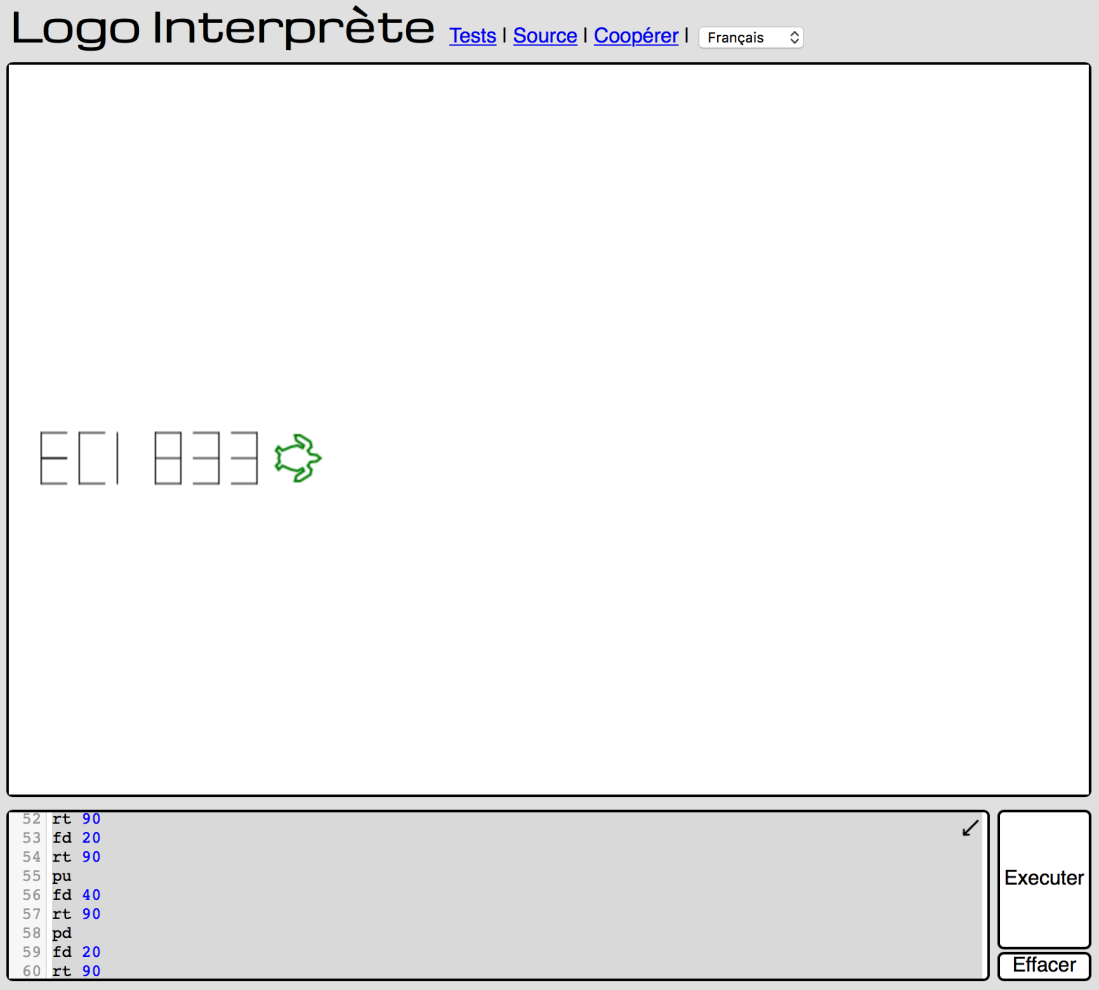As I dove into the world of Logo, I asked myself where this was when I was a young person learning about computers. I had many flashbacks of the days when I spent hours upon hours demystifying the world of BASIC on my old Pentium 100 PC. The instant gratification of modifying code and seeing the result or my work kept me engaged and wanting to try the next challenge, exercise after exercise. This cycle of learning simple concepts and instantly applying them to real world situations is akin to the same cycle I try to use in my science classes. Upon the mastery of one concept, another is explored, and the loop continues. This continuous pattern of stacking bits of knowledge one by one into a larger bank of knowledge though first-hand experience and practice is exactly how the learning philosophy of constructionism is intended to work.
Proposed by Seymour Papert, constructionism is:
“The word constructionism is a mnemonic for two aspects of the theory os science education underlying this project. From constructivist theories of psychology we take a view of learning as a reconstruction rather than as a transmission of knowledge. Then we extend the idea of manipulative materials to the idea that learning is most effective when part of an activity the learner experiences as constructing a meaningful product.”
To me, the use of the Logo programming language is an excellent framework for learning “how to think” in the world of problem solving. Although the applications to the world of science and mathematics is quite evident, I would affirm that there acquired skills could translate quite well to other aspects of childhood d development. With the world of media constantly bombarding the minds of the youth of today, their minds are carefully molded in very linear ways though various media like movies, youtube videos and videogames. A large portion of videogames released today guide kids though a journey that is set by a storyline provided by the game developer. The chance for developing creativity and letting kids explore their potential is quite limited in the context of these types of media.
However, there seems to be a renewed interest over the past few years in developing new media opportunities for kids to explore a more creative side while also stimulating their minds. Here are a few examples that I find provide the same type of experience that we see in the Logo programming language:
- Minecraft: A virtual world released in 2011 by Mojang, this game provides kids a virtual world where almost anything is possible. Being that there are no specific goals, it allows the players to decide how to play the game. With millions of players around the world in almost unlimited game modes, amazing things have been accomplished with this game.
- Lego Mindstorms: Given the direct link with Seymour Papert, it’s not surprising Lego Mindstorms resemble Logo. The use of these programable building brick with the traditional Lego building platform, kids and adults can build and test new ideas in the concrete world.
As of the past few years in Saskatchewan, there has been a big push for including some aspect of coding in our classrooms. I welcome these initiatives as I find it fills a big hole in childhood development. As a species, we have always been striving to develop tools to improve our live with what we have around us. By allowing kids to play in a world where they can develop their own tools and their own knowledge using creativity and play, we are ensuring the flourishment of a generation that is adept at problem solving.
In addition to the aspect of coding, I would argue we must allow our students to also more openly explore the world of arts and making though the maker movement. Interfacing with the real world is as important as interfacing with the virtual world. I cannot thank my parents enough for allowing me to take apart and experiment with toys, electronics and everyday items. It opened up in me a whole new world and a whole new way of thinking that has proven quite fruitful in my profession and my passions that are my hobbies. Thanks Seymour!

One thought on “Turtle Power! From fd 100 to logic”